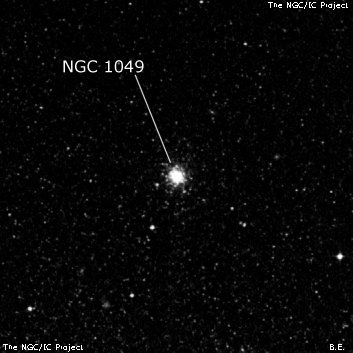Fornax Dwarf Cluster 3
Fornax Dwarf Cluster 3

John Herschel discovered NGC 1049 = h2492 on 19 Oct 1835 and reported "pretty bright; small; round; like a star 12th magnitude a very little rubbed at the edges, a curious little object and easily mistaken for a star, which, however, it certainly is not". His position is 1' N of this Fornax Dwarf globular. The galaxy itself was discovered over a century later by Harlow Shapley in 1938 while at the Boyden Station in South Africa on photographic plates taken with the 24" Bruce refractor.
300/350mm - 13.1" (10/10/86): brightest of four globular clusters in the Fornax Dwarf galaxy. Moderately bright (estimate V = 12), small, very small bright core, faint halo. Located 15' NNE of mag 8.0 SAO 193841. The Fornax Dwarf galaxy was not seen.
400/500mm - 17.5" (10/8/88): fairly faint, very small, round, small bright core.
600/800mm - 24" (9/14/12): at 325x, moderately bright, fairly small, round, bright core, 30" diameter.
900/1200mm - 48" (10/29/16): at 488x; very bright, moderately large, very high surface brightness, granular appearance, ~50" diameter. There are three well defined brightness zones: an extremely bright compact nucleus, a small bright core and a much lower surface brightness halo with a fairly well defined circular edge.
Notes by Steve Gottlieb